#pollaxes
Text

Pollax time
57 notes
·
View notes
Text

Friday knight at the museum
380 notes
·
View notes
Photo
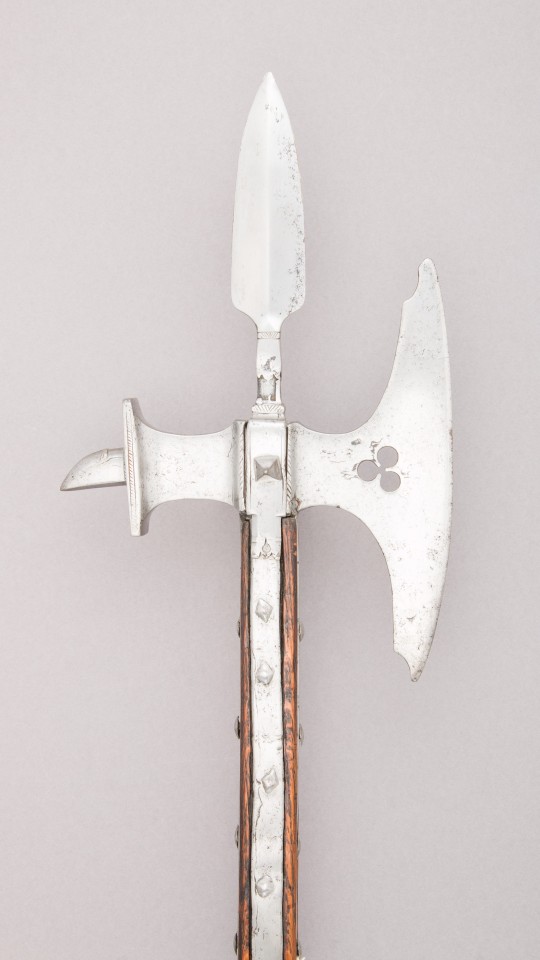
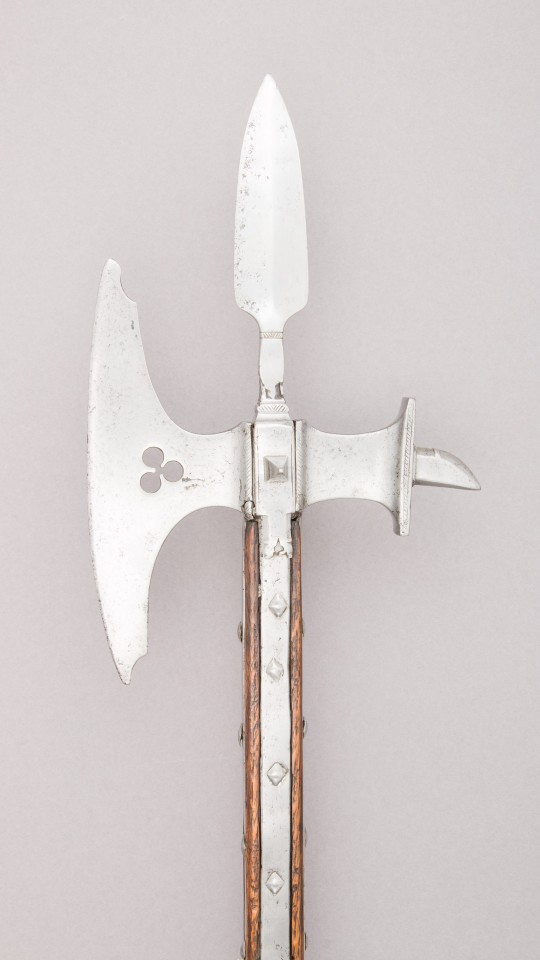
A lovely Pollaxe with a pierced blade,
OaL: 81.9 in/208 cm
Blade Length: 12.5 in/31.8 cm
Width: 8.25 in/21 cm
Weight: 5.4 lbs/2466.4 g
Burgundy, ca. 1450, housed at the Metropolitan Museum of Art.
#weapons#polearm#pollaxe#europe#european#burgundy#burgundian#medieval#middle ages#themet#metmusuem#art#history
393 notes
·
View notes
Photo
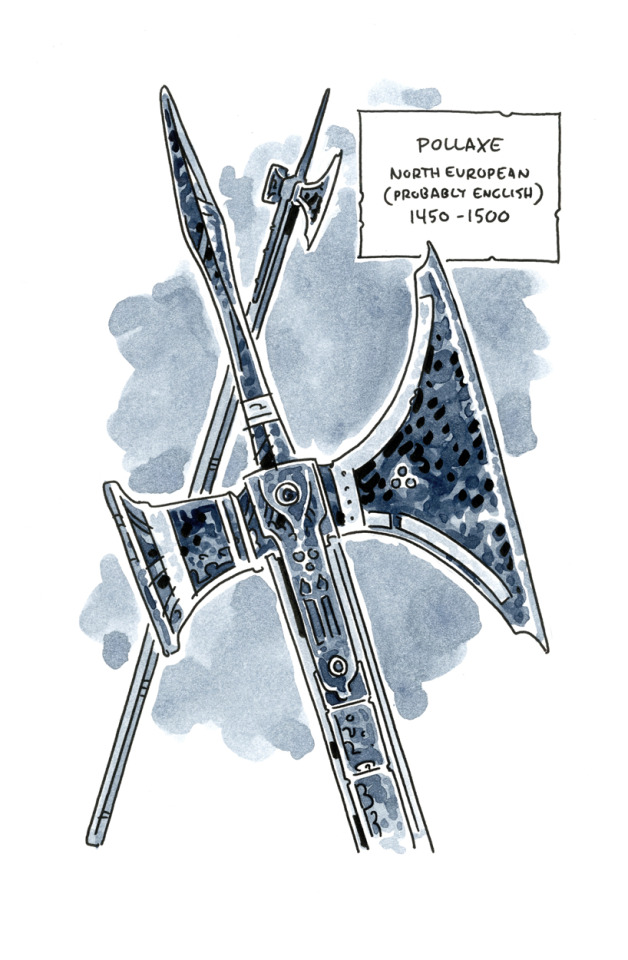
I forgot to post yesterday's Blades of May drawing! Sunday's prerogative.
Here it is now: Blades of May #7, a 15th century pollaxe from the Royal Armouries in Leeds.
91 notes
·
View notes
Text
a bit of fighting i did at a small games convention two weeks back
i’m in the polished 3/4s armour with the blue trunkhose
#fantasy#medieval#16th century#historical european martial arts#hema#armour#harnischfechten#longsword#pollaxe#event#reenactment#living history#larp
8 notes
·
View notes
Text
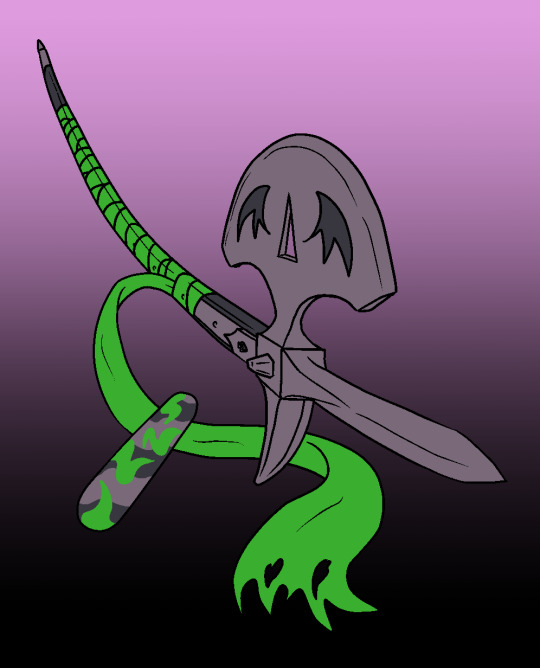
Black Romance, a weapon that belongs to Shelly in an RP setting. Transforms between a poleaxe and a slap wristband. (seen in the lower left)
0 notes
Photo
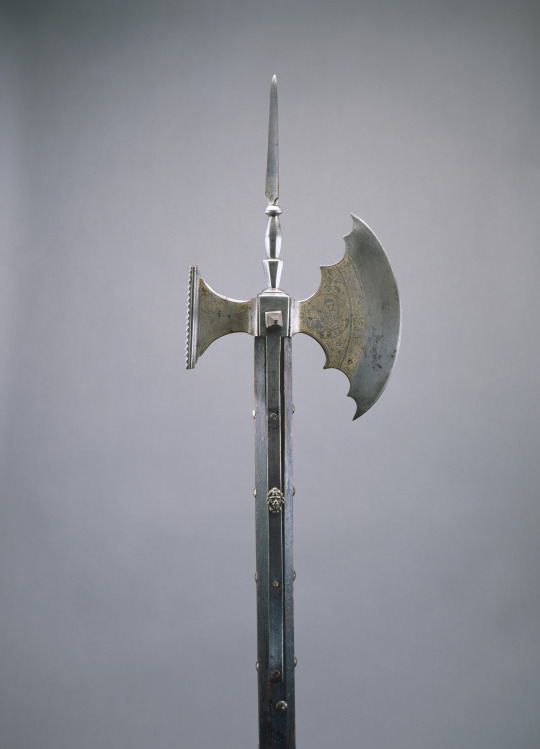
Pollaxe, early 1500s, Venice, Italy.
43 notes
·
View notes
Text
14th century English pronunciations of arms and armour
basinet as bass (fish) in it
bevor with Trevor
chapel de fer as chapel (church) di fur – also, the words all run together
coif as koi (carp) + terminal f
couter as cow ter (the ter in terror)
cuir bouilli as queer bully
cuisse with quiche but the initial qu sound as in quack
gorget as gorge it
grapper with trapper
pallet as in colour palette
pauldron as (a)ppalled Ron
pisan as peas Anne
poleyn as Paul ain (the ain in pain)
pollaxe with doll axe
Source: Medieval Arms and Armour, a Sourcebook, Volume 1
#14th century#middle ages#medieval#poleaxe#poleyn#pauldron#gorget#gamboissed cuisse#cuir bouilli#couter#coif#bevor#bascinet#plate armour#knight
2 notes
·
View notes
Text
let's try this one more time,
freyr's brother is being renamed to hawthorn.
both non conforming but intersex, freyr on the feminine, hawthorn on the masculine before leaning into both presentations entirely
freyr's imagery, and magic altogether, resembles a black hole more than the sun. hawthorn's is closer to the aspects of an eclipse and dying stars.
the only thing keeping freyr a step back from becoming stronger than his counterpart, otherwise his sibling, is fear. yet the only thing keeping him from ending it all is his need for justice.
freyr living with not a single spec of fear in his soul would actually be a force to be reckoned with. (the world where those around him live in this reality face him with the name 'jessamine' instead)
rather than a bow and arrow, freyr possesses a pollaxe instead concentrated with pure blinding positivity, it is very rare for him to put a life ending percentage of it into his attacks.
he can also be able to influence other's emotions the same way his brother does to his advantage, whether within a certain pursuit or a way to swiftly guide people further into persuasion. unlike his brother however, it's a smoother transition through the emotions already present, rather than a forced concentration of feelings onto the mind.
Ṭ̶̎H̸͖̐E̷̛̺ ̷̪̄V̴̮̑E̶̙͒S̷̨̀S̶̙͋É̵̯L̵̹̇ ̴̬͘ residing within hawthorn at some point of their timeline remains at large a byproduct of his entire core being split into the two, the negativity and darkness in his soul becoming concentrated into the psychological manifestation of a separate being. they take upon the name belladona.
while belladona is subdued deep within the underground recesses of hawthorn's mind for a very long time, they can and do possess the capacity to resurface and slip through the cracks of the seal freyr had made to trap them inside.
belladona's form, when not choosing to reflect hawthorn's original body before his eventual corruption, is entirely swallowed in shadow, you can only make out the shape they're supposed to be from the spikes of it threatening to go nuclear.
belladona has an almost painfully uncanny yet dangerously close portrayal of hawthorn as he was before. freyr barely if at all has any interest in communication.
freyr after hawthorn's corruption realizes the grueling loneliness of complete and total isolation. seeing as he was praised and idolized the most out of the two, it was both liberating, and brutally lonely as an experience. whileas his brother, hawthorn, experiences the position of power and grandeur that he otherwise lacked, fully abusing it as his brother had not.
it's not as difficult for freyr to reflect upon the rest of the guttural parts of their lives in result.

the first time they crossed paths it was already clear they were strangers and yet all too painfully familiar the same. as if seeing the way a picture would've been changed through time, yet it's still the same as you remember.
that very same time they also tried to kill each other.
seeing how they live for hundreds more, it only becomes a vicious cycle for longer than even both of them would want to accept.
oh well. poor things.
3 notes
·
View notes
Note
What's your next favorite weapon, excluding swords
hmm, this ones tricky. maybe pollaxe or halberd? unarmed stuff is also really fun!
9 notes
·
View notes
Text
Somebody here gotta ask the real questions about Avowed though
Will the game have some dang spears and pollaxes like pillars or will it wimp out like TES after oblivion
7 notes
·
View notes
Text
I might've actually rolled the worst lot for expensive hobbies in life lmao. I'm simultaneously trying to run four aquariums with two axolotls and can't decide on a Warhammer army to collect for the life of me and I'm into medieval arms & clothing enough to willingly spend at least a thousand bucks on a specially dyed tunic made without a sewing machine back in europe and part of a suit of armor & pollaxe
2 notes
·
View notes
Text
ABOUT ME
Pronouns: She/They
Time Zone: PST/PDT (GMT-8/GMT-7)
I've been practicing HEMA since August of 2022, before which I practiced modern fencing from 2019 to 2022 and kendo from 2018 to 2021.
I specialize primarily in a synthesized longsword form combining elements from the teachings of Fiore de'i Liberi, George Silver, and various masters of the Liechtenauer tradition.
I also practice rapier, though with a more compartmentalized approach to each source than the synthetic approach that I take with longsword. Rapier masters I've studied, in ascending order of depth, are Salvator Fabris, Gerard Thibault, Camillo Agrippa, and Luis Pacheco de Narváez. Currently, I prefer Thibault's style of what Pacheco would deride as a bastardized form of La Verdadera Destreza.
To a lesser degree, I also practice I.33 sword and buckler, and I enjoy occasionally dabbling in pollaxe, messer, and non-European weapons like the shotel.
5 notes
·
View notes
Text

@post-brahminism
imho the pollaxe has its place in the context of late medieval full-plate-armour fights but the longsword remains highly effective in both armoured and unarmoured settings (plus its a weapon you can *wear* instead of having to carry)
5 notes
·
View notes
Text
The pollaxe, the lucerne hammer and the bec de corbin - how do they fit together?
If you're someone interested in late medieval western european weaponry you have no doubt come across the pollaxe, and also the weapons people refer to as lucerne hammers and bec de corbins. But you also probably have seen these terms used on the same weapon, so how do they actually fit together and how were they used in history?
To begin with, the pollaxe is a weapon that, despite its name, does not need to have an axe blade. Since variants with hammers and beaks are just considered that - variants. It's still fundamentally the same weapon and can use almost all of the same techniques in the fencing manuals there is rarely a differentiation made in historical documents between ones with axe blades and ones with hammer heads. Most axe fencing treatises from the 15th century showcase hammer headed ones, for example this treatise from Paulus Kal:

This is also present in many other treatises such as Talhoffer, Fiore, Le Jeu de la Hache, etc etc. In fact it seems more common for axes used in dueling to have hammer heads and beaks rather than blades, although there's still examples of the latter.
Before I move on to the bec and the lucerne hammer, I will talk shortly about the term pollaxe. While sounding similar to poleaxe it is thought that the origin of the word comes from the word 'poll', meaning head, rather than the word pole. It is also a strictly english term and often the weapon is also simply just called axe, or battle-axe. In other languages some regional variations can be found, such as mordaxt from german, but in most cases it is just referred to as axe (axt, hache, azza, etc etc).
Anyway so going back to the bec de corbin. Bec de corbin is actually a rare form of this term, and the more common one in documents is Bec de Faucon. These refer to the beak of the pollaxe but at some point did come to denote axes which specifically have hammer heads and beaks. However it should be clear that in the documents this is simply thought of as a further categorisation of the pollaxe, it is not a separate weapon, and in many cases even in french sources these weapons are simply called 'axe'. Any axe with a hammer and a beak can be called a bec de faucon (or corbin), if you're speaking french. I have not found an equivalent term in other languages.
Lucerne Hammer is the least historical of the three terms. It was popularised by Ewart Oakeshott in the modern period, however there might be earlier references using this name that I am personally unaware of.
This term is used to denote a very specific type of head construction found on swiss pollaxes of the late 15th and 16th centuries (and not earlier). Since a lot of these axes, or hammers, were found in the Lucerne armoury due to it being a popular militia weapon the construction came to be known as Lucerne Hammer. What actually is this construction then?
While non-swiss pollaxes will have the top spike and the langets (shaft reinforcements) go on top of the axe head and be fastened on the outside of it, these swiss axes instead have the head be outside of the langets. Why this was done is unknown but it is a feature that seems to be localised entirely (or almost entirely) to switzerland, and shows up in the very late 15th century where it remains in use throughout the 16th. This was potentially easier to mass-produce, although whether this actually is the reason remains unknown. It should also be noted this is not limited to hammers and is also found on axe-bladed pollaxes.
For clarity, I will post the two relevant constructions below outlined.
This one is the so-called Lucerne Hammer with the swiss construction, note how the head is above the underlying reinforcement (outlined in red).

This example below is Italian, and one can see how the head is under the shaft reinforcements (outlined in red).

So to recap:
Both of the examples above are axes (pollaxe if you're speaking english).
Both of the examples can be called 'bec de faucon/corbin' (if you are speaking french)
Only the top one can be called a 'Lucerne Hammer', and this is a construction that does not show up before the late 15th century. The term is also of questionable historicity.
Hopefully, that cleared things up!
5 notes
·
View notes
